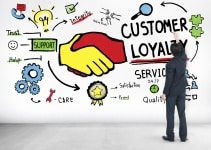As organizations gear up for a new year, the importance of aligning goals across all levels cannot be overstated. Whether you’re a small startup or a multinational corporation, ensuring that individual, team, and organizational objectives are in harmony is crucial for driving success. Assessments—both formal and informal—play a vital role in achieving this alignment, providing actionable insights and fostering a cohesive work environment. Here are nine key ways assessments can help align goals for 2025:
1. Establishing a clear vision and mission
Assessments provide a foundation for revisiting and refining an organization’s vision and mission statements. By soliciting feedback through surveys and focus groups, leadership can ensure that the overarching goals resonate with employees. When everyone understands the “why” behind their work, alignment becomes a natural outcome. A clear, shared purpose also inspires motivation and commitment across all levels.
2. Identifying strengths and gaps
Comprehensive assessments, such as 360-degree feedback or skills audits, allow organizations to pinpoint strengths and gaps at the individual and team levels. Understanding where your employees excel and where they need support ensures that resources are allocated effectively. For example, a team with strong analytical skills but weak communication abilities might benefit from targeted training sessions to bridge this gap, aligning team capabilities with broader organizational needs.
3. Fostering transparent communication
Goal alignment requires open communication—a factor that assessments can actively improve. Tools like employee engagement surveys and team pulse checks reveal communication bottlenecks or misunderstandings. By addressing these issues head-on, organizations can ensure that goals are communicated clearly and consistently, eliminating confusion and promoting cohesion.
4. Customizing individual development plans
One-size-fits-all approaches rarely lead to meaningful progress. Assessments enable managers to create tailored development plans for their team members. For example, a career aspirations survey can uncover individual motivations, while performance evaluations identify areas for growth. Aligning these development plans with organizational objectives ensures that employees feel valued and engaged while contributing to the company’s success.
5. Enhancing team collaboration
Assessments, such as personality tests or collaboration surveys, help teams understand their dynamics better. By aligning these insights with team goals, organizations can create high-performing units that work cohesively toward shared objectives.
6. Linking performance metrics to strategic goals
Effective assessments provide a data-driven way to tie individual and team performance metrics to broader strategic goals. Regularly assessing progress ensures accountability and keeps everyone aligned with the organization’s vision for 2025.
7. Promoting a culture of accountability
Accountability is the cornerstone of successful goal alignment. Assessments provide the necessary structure to track progress and hold individuals and teams accountable for their contributions. Performance reviews, project milestones, and KPI dashboards serve as checkpoints to ensure that everyone stays on track. A culture of accountability fosters trust and reinforces the importance of shared goals.
8. Driving continuous improvement
The process of alignment doesn’t end once goals are set; it’s a continuous journey. Regular assessments ensure that organizations remain agile and responsive to changing circumstances. For example, quarterly team evaluations or employee feedback sessions can uncover evolving needs, allowing leaders to adjust priorities and maintain alignment throughout the year.
9. Boosting employee engagement and retention
Aligned goals not only drive organizational success but also improve employee satisfaction. Assessments help employees see how their work contributes to the bigger picture, fostering a sense of purpose. Engagement and retention naturally improve when individuals feel aligned with the company’s mission and valued for their unique contributions. This cohesion becomes a powerful driver for long-term success.
Conclusion
Organizations have a golden opportunity to leverage assessments for achieving goal alignment and fostering organizational cohesion. From clarifying the vision and identifying strengths to promoting accountability and driving continuous improvement, assessments provide a robust framework for success. By aligning individual, team, and organizational goals, businesses can create a unified and motivated workforce poised to achieve great things in the coming year.




